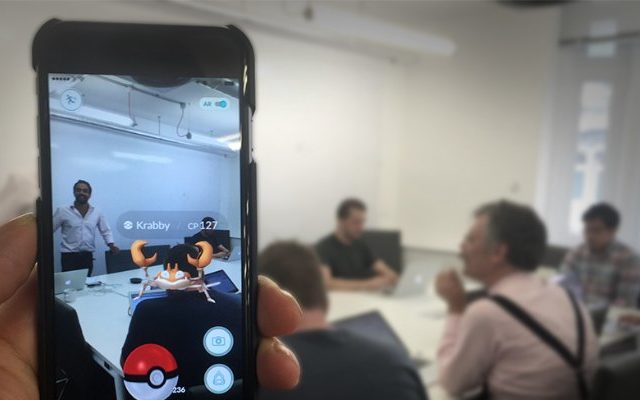Pokémon GO has flooded news feeds. The societal impact it’s had is unprecedented for a mobile game. It has increased Nintendo’s share value by 56% in just nine days since its launch. Real estate agents are predicting it will affect house prices and it’s already being used to differentiate properties. But who cares? It’s just a game, so why should we care about virtual and augmented reality technologies in the enterprise?
It’s easy to be skeptical. Only a few hundred million people are going to being using the technology by 2020 and even fewer will have access to augmented reality technology, so it’s not a lot of use to most businesses right? Beep. Wrong. Grab your surfboard for the next wave of technology if you wish to remain relevant.
Without trying the technology for yourself and exploring applications for the technology, mere words fall short of the experience the technology gives. And although it is evident that video games and entertainment is the ‘tip of the spear’ with a conservative estimated market of $14.8B by 2025*, the applications for these incredibly immersive and persuasive technologies have tangible benefits to the enterprise. Heather Bellini, Business Unit Leader at Goldman Sachs explained earlier this year that:
We think this technology has the potential to transform how we interact with almost every industry today … it will be equally transformative both from a consumer and an enterprise perspective.
In this post we’ve outlined the estimated addressable market, number of users, benefits and applications across three sectors. There are with concrete examples of where both virtual and augmented technologies are already having an impact in the public and private sectors. As you can see here, these technologies are certainly not just for consumer markets.
Healthcare
Addressable market: $5.1B Estimated users: 3.4M Benefits: Increased patient and provider value, operational efficiencies, better training. Applications: Treatment for PTSD, exposure therapy, all training, pain management, assessment and rehabilitation, social cognition training for autism, relaxation techniques.
Mircosoft’s Hololens showcasing virtual anatomical breakdown
Education
Addressable market: $0.7BEstimated users: 15MBenefits: Game-based learning increases motivation, immersion eliminates distractions, promotes creativity, new forms of digital rewards, fosters intellectual curiosity, suited to all learning styles, increased knowledge retention.Applications: Explore and interact with any world, thing, or person at any time. Collaborate in digital space on projects.
Google Expeditions: Take students to places a school bus can’t
Engineering
Addressable market: $4.7B. Estimated users: 3.2M Benefits: Operational efficiencies, improved safety, increased employee engagement & retention. Applications: Remote guidance, onsite training (great for costly offsite tasks), part identification, CAM/CAD software, step-by-step assembly, safety prompts and instructions, thermal vision, 1–2–1 or 1-to-many communications, mapping.
Daqri’s AR Helmet offers “a new class of computer vision capabilities”
***
This is only a small sample of potential applications. Virtual, augmented and mixedreality technologies will have a profound impact across every industry. From real estate to conferencing, live events, the military and even finance and insurance.
The behaviours being shaped by experiences such as Pokémon GO are setting expectations of hundreds of millions of players of the mobile game. In fact, experiences such as this are where your future employees and customers are being conditioned to augmented reality (at no charge to you!).
The power of this shift should not be underestimated.
***
*AR/VR Market value stats source: Virtual & Augmented Reality: Understanding the race for the next computing platform, Goldman Sachs — January 13, 2016
Article by channel:
Everything you need to know about Digital Transformation
The best articles, news and events direct to your inbox
Read more articles tagged: AI, Featured, Virtual Reality






